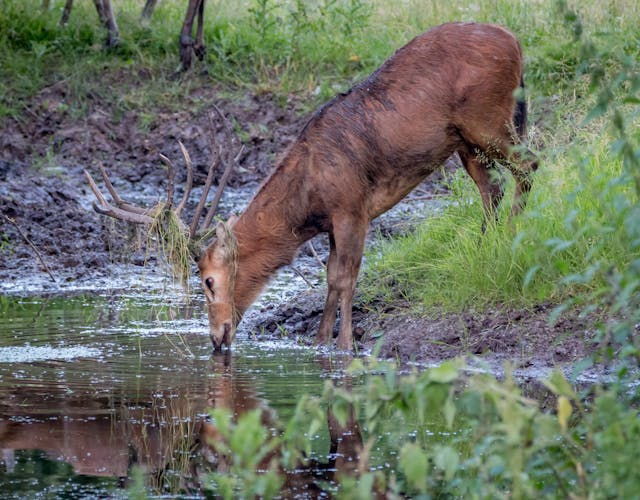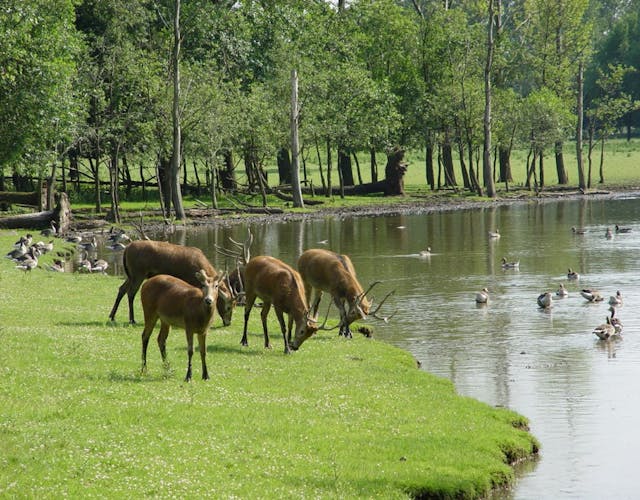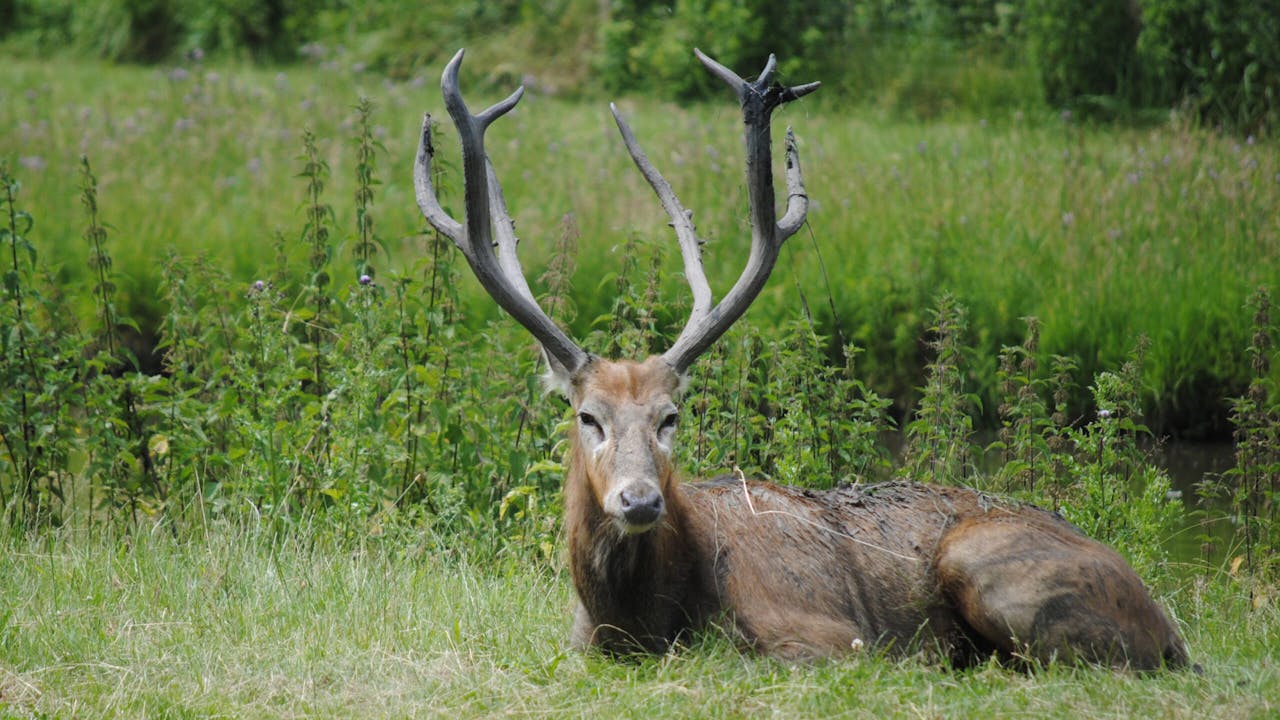Père David’s deer
The Père David’s deer was once a common species of deer native to the subtropical river valleys of China. Unfortunately, numbers have plummeted dramatically over the years. There are only about 1,500 Père David’s deer left worldwide. Natuurpark Lelystad is one of the few places worldwide where this special deer can be seen and it is the only place in the Netherlands where the Père David’s deer roams.

The Père David’s deer is a highly endangered species and that makes it extra special that they roam around Natuurpark Lelystad. A breeding program for Père David’s deer has been established since the 1980s and their numbers are now growing steadily. There are even Père David’s deer living in the wild in China again. Yet their genetic basis is very narrow and the animals are susceptible to diseases. So every animal that is born is important! Within Natuurpark Lelystad we do our utmost to contribute to the conservation of this species.
Name: Père David's deer Species: Cervus elaphus Family: deer Range: China Height: shoulder height 1.15 meters Weight: 150 - 200 kg Diet: Grass, herbs and aquatic plants Rutting season: september to october Antlers: Two new sets of antlers per year

Almost extinct
Père David’s deer were discovered in China in 1865 by the French missionary Armand David. The missionary was the first European to see the animals and named them after himself. It was once a common species that lived throughout China. Over time, however, the Chinese had hunted the deer so heavily that the species was almost exterminated. There was only one herd left on the hunting grounds of the imperial court in Beijing.
To make matters worse, these animals were shot and eaten by the hungry population in 1900 during the Boxer Uprising. Sixteen deer survived because they had been shipped to European zoos as a gift from the emperor just before the Boxer Rebellion. All current Père David’s deer are descended from those sixteen animals. Including the deer in Natuurpark Lelystad.

Water deer
The Père David’s deer is a fairly large deer with a brown coat. The animals have longer noses, tails and legs than red deer and wider hooves, which allow them to navigate swampy terrain. They are true swamp deer that mainly graze, but supplement their vegetable diet with aquatic plants in the summer. They are excellent swimmers and love water.
In Natuurpark Lelystad the animals live in a large, watery enclosure where you can regularly see them swimming and foraging in the water. The males have large antlers with branches pointing in all directions. The young that are born have light spots so that they are less noticeable among the bushes. Those spots disappear as they grow up.
